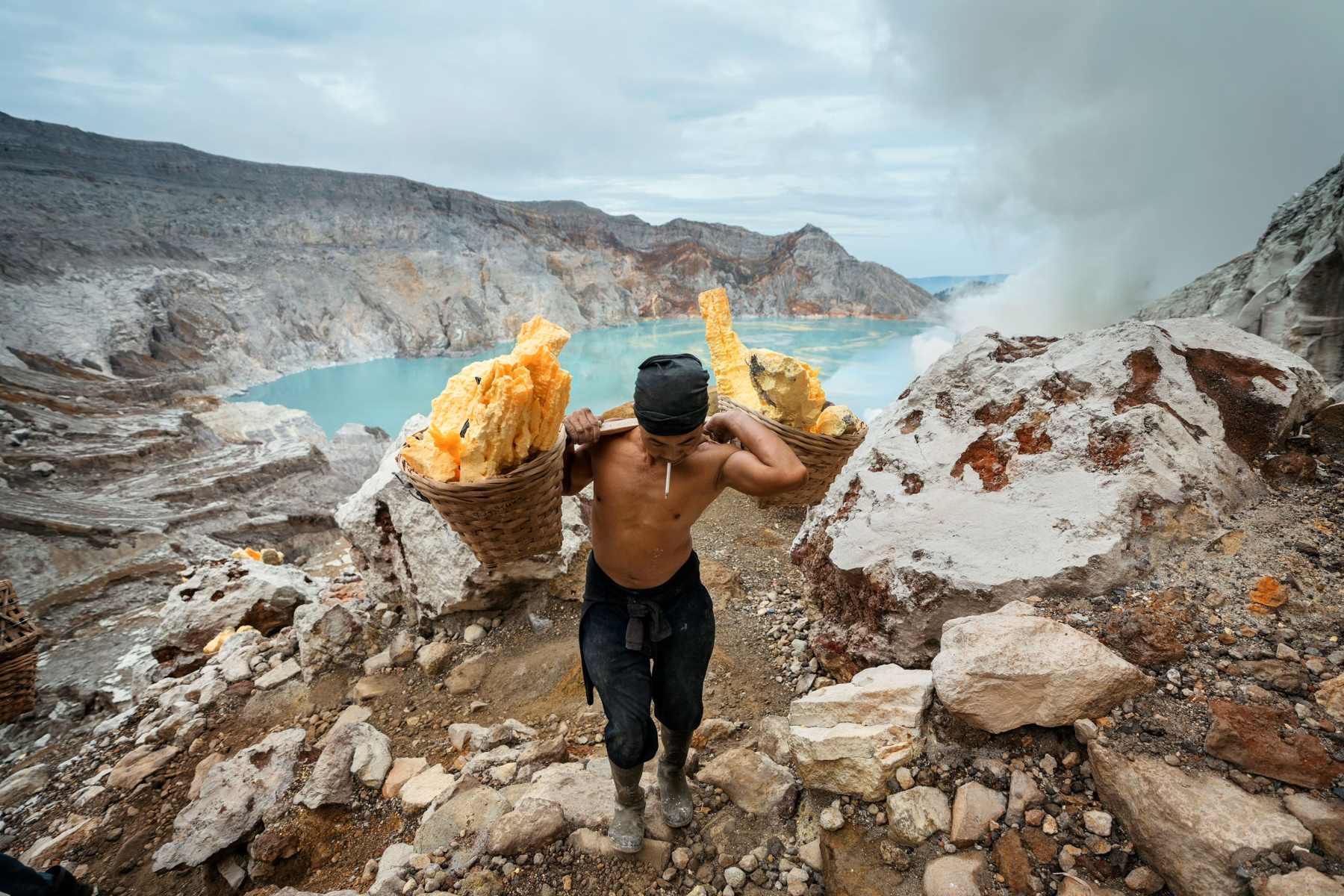Kawah Ijen Indonesia: The Sulphur Miner Journey

Have you ever wondered what it's like to work in one of the most dangerous jobs on Earth? Welcome to Kawah Ijen, Indonesia, where miners brave toxic fumes and treacherous terrain to extract sulphur from an active volcano. This unique location, known for its stunning blue flames, offers a glimpse into the lives of these resilient workers. Imagine carrying heavy loads of sulphur up steep paths, all while surrounded by breathtaking yet hazardous scenery. In this post, we'll delve into the daily challenges faced by these miners and explore the incredible natural beauty of Kawah Ijen. Get ready for an eye-opening journey into a world few have experienced.
Kawah Ijen: An Overview
Kawah Ijen, located in East Java, Indonesia, is a volcanic crater known for its stunning blue flames and sulfur mining. This natural wonder attracts adventurers and photographers from around the globe. The journey to Kawah Ijen is both challenging and rewarding, offering breathtaking views and unique experiences.
The Blue Flames of Kawah Ijen
One of the most mesmerizing sights at Kawah Ijen is the blue flames. These flames are caused by sulfuric gases igniting as they escape from the cracks in the volcano.
- Blue Flames at Night: The best time to witness the blue flames is during the night or early morning. The darkness makes the flames more visible and dramatic.
- Sulfuric Gas: The blue flames result from sulfuric gas combusting at high temperatures. This phenomenon is rare and can only be seen in a few places worldwide.
- Safety Precautions: Due to the toxic gases, visitors must wear gas masks. Local guides provide these masks and ensure tourists' safety.
The Sulfur Miners
The sulfur miners of Kawah Ijen endure harsh conditions to extract sulfur from the crater. Their work is grueling, yet they continue this tradition to support their families.
- Daily Routine: Miners start their day early, often before dawn, to avoid the intense heat. They hike up the volcano and descend into the crater to collect sulfur.
- Heavy Loads: Each miner carries baskets filled with sulfur, weighing between 70 to 90 kilograms. They transport these loads up steep paths to the weighing station.
- Health Risks: Constant exposure to sulfuric gases poses significant health risks. Many miners suffer from respiratory issues and other health problems.
The Trek to Kawah Ijen
Reaching Kawah Ijen requires a challenging trek, but the journey offers stunning landscapes and a sense of accomplishment.
- Starting Point: The trek begins at the base camp, where visitors can rest and prepare for the hike. Guides are available to lead the way and provide information about the area.
- Trail Conditions: The trail is steep and rocky, requiring good physical fitness. Proper footwear and clothing are essential for a safe and comfortable hike.
- Scenic Views: Along the way, hikers are treated to panoramic views of the surrounding mountains and forests. The sunrise from the crater rim is particularly spectacular.
The Crater Lake
At the heart of Kawah Ijen lies a stunning turquoise crater lake, known for its high acidity and striking color.
- Acidic Waters: The lake's water is highly acidic due to the sulfuric acid, making it one of the most acidic lakes in the world. Swimming is not allowed.
- Turquoise Beauty: The vibrant turquoise color of the lake contrasts beautifully with the surrounding landscape, creating a picturesque scene.
- Photo Opportunities: The crater lake offers numerous photo opportunities. The best time for photography is during the early morning when the light is soft and the colors are vivid.
Local Culture and Traditions
The area around Kawah Ijen is rich in culture and traditions. Visitors can learn about the local way of life and the customs of the people who live there.
- Local Villages: Nearby villages offer a glimpse into the daily lives of the local people. Visitors can interact with villagers and learn about their customs and traditions.
- Traditional Crafts: Many villagers engage in traditional crafts, such as weaving and pottery. These crafts are often sold as souvenirs, providing a source of income for the community.
- Cultural Festivals: Throughout the year, various cultural festivals take place in the region. These festivals showcase traditional music, dance, and food, offering a rich cultural experience.
Practical Tips for Visiting Kawah Ijen
To make the most of your visit to Kawah Ijen, it's important to be well-prepared and informed.
- Best Time to Visit: The dry season, from April to October, is the best time to visit. The weather is more predictable, and the trails are less slippery.
- What to Pack: Essential items include sturdy hiking boots, warm clothing, a gas mask, and a flashlight. Snacks and water are also important for the trek.
- Hiring a Guide: Hiring a local guide is highly recommended. Guides provide valuable information, ensure safety, and enhance the overall experience.
Reflecting on Kawah Ijen's Unique Experience
Kawah Ijen offers an unforgettable experience. The blue flames and sulphur mining operations are unlike anything else. Watching miners work tirelessly in harsh conditions gives a new appreciation for their efforts. The stunning views from the crater rim, especially during sunrise, make the challenging trek worthwhile.
Visiting this unique location requires preparation. Bring a gas mask to protect from sulphur fumes and wear sturdy shoes for the rocky terrain. Respect the miners and their work, understanding the risks they face daily.
Kawah Ijen isn't just a tourist spot; it's a place where nature's beauty and human resilience meet. This adventure leaves a lasting impression, reminding visitors of the incredible stories behind the landscapes they explore.

